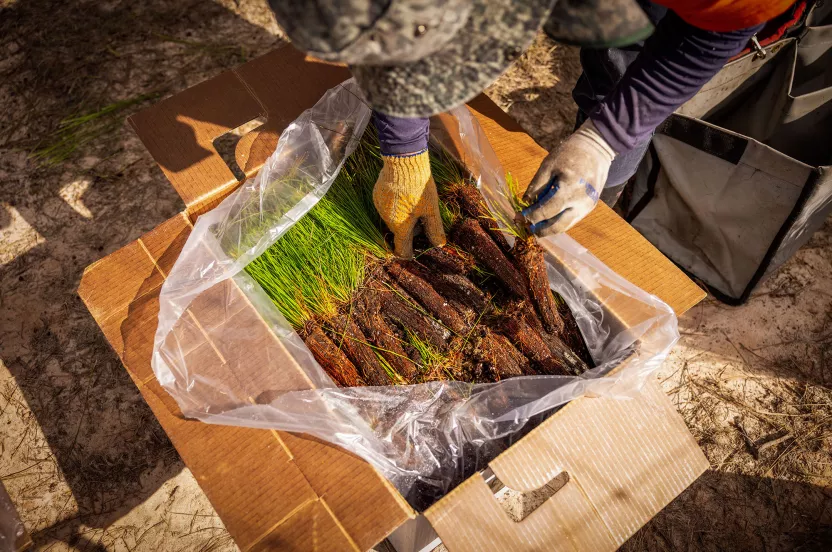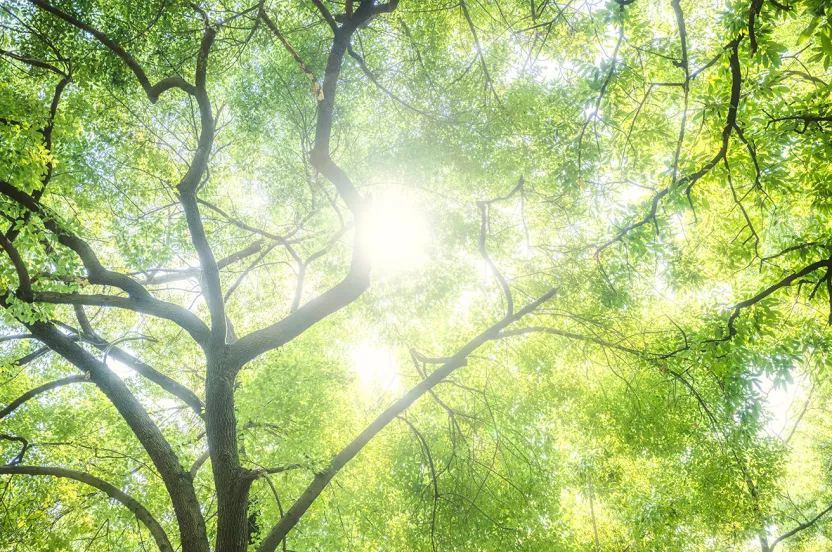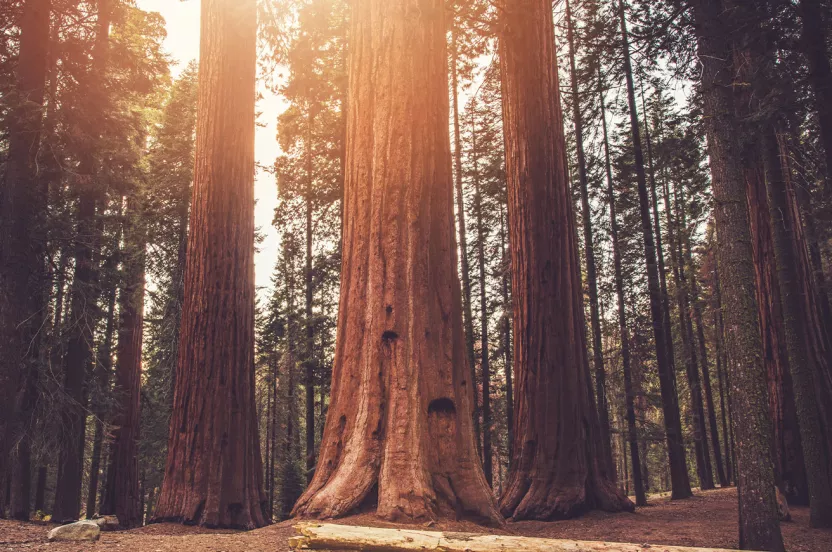The Arbor Day Foundation is pledging 10 million trees to areas impacted by hurricanes Helene, Milton Help us replant
Why the World Needs Millions of Trees — And How to Plant Them Right
Science says we need more trees. How do we plant millions the right way?
July 14, 2023

It’s not hard to find headlines about planting millions, billions, trillions of trees for the greater good.
Our own organization plans to plant 500 million trees in forests and neighborhoods of greatest need by 2027.
It’s widely accepted that planting a huge number of trees is one of the best solutions to climate change available today. There’s even enough land available to increase the world’s forest cover by 30% without affecting cities or farms. The UN is highly confident that restoring forests is “one of the most effective and robust options for climate change mitigation.”
But questions remain: Where are the trees being planted? How will they survive? Where does the funding come from? Why do we even need all these trees?
And the Arbor Day Foundation is glad people are asking.
This scrutiny is critical. It’s a testament to how much this work matters and how important it is to proceed responsibly. It reminds nature-based organizations, including ours, that accountability matters.
The New York Times said it best:
“These efforts can be a triple win, providing livelihoods, absorbing and locking away planet-warming carbon dioxide, and improving the health of ecosystems. But when done poorly, the projects can worsen the very problems they were meant to solve.”
As more organizations set out to plant trees at scale, the potential for cutting corners and inexperienced decision-making grows. But future generations are relying on us to get this right. Planting the right trees, in the right place, for the right reasons is a must.
The Arbor Day Foundation has spent 50 years listening, learning, and adapting.
To maximize the long-term impacts of trees, planting organizations need a set of guiding principles. The Arbor Day Foundation has spent 50 years listening, learning, and adapting to develop our processes and grow a network of local partners. Today, these principles act as our organizational compass:
- Act with character and integrity, always asking questions to ensure our work and the work of our partners supports our mission, vision, and core values.
- Plant the right tree, at the right time, in the right place, for the right reason. Then, grow a diverse and native forest with proven forest conservation and forest management plans.
- Provide support in a way that includes, empowers, and benefits local people and communities for the long-term. Promote equity and collaboration to secure the lasting success of the project, and the locals near it.
- Align to science-based frameworks and goals. Forests need protection, better management, and restoration. In addition to high-quality and high-integrity forestry investments, humanity must avoid and reduce greenhouse gas emissions rapidly to stabilize the climate.
Starting with the right partners
In the Arbor Day Foundation world, there are two kinds of partners. The first is a tree planting organization, who will put trees in the ground. The second is a funder, who pays for the resources to make it happen.
Tree planting organizations are the difference-makers for both large-scale reforestation projects and more personal neighborhood efforts. Our partners include tree planting nonprofits, conservation geneticists, on-the-ground foresters with the USDA Forest Service, state forest services, and the Bureau of Land Management. They have a strong understanding of their local ecosystem and its unique challenges. We believe following their lead is essential for successful tree plantings that help the planet and people.
A strong tree planting partner is also ingrained in the local community. It ensures that planting projects are executed properly — with the right trees for the need — and have buy-in from the people who live there. No one should feel like tree planting is happening to them.
Funders are usually large-scale corporate partners, often investing to meet their sustainability goals. Their monetary support, spurred on by consumer demand for sustainability, is a huge driver behind the tree planting boom.
These efforts should be applauded. At the same time, organizations like the Foundation are responsible for pushing for choosing corporate partners who are planting trees for the right reasons.
These two partners — those funding the work and those planting trees — are how we affect change for the planet and every being living on it.
These two partners — those funding the work and those planting trees — are how we affect change for the planet and every being living on it. They must be chosen carefully. Each Arbor Day Foundation partner and project goes through a rigorous vetting process to confirm plans for site prep, planting, and care after trees are in the ground.
Asking the right questions
Responsible tree planting at scale always involves asking questions — of ourselves and our partners.
For reforestation projects, especially after a natural disaster, questions revolve around the natural ecosystem. Is replanting necessary? Or will the area restore itself naturally, which is sometimes better? Decisions about what trees to plant should start with native and endemic species, the historical forest makeup, and expected changes in climate. In collaboration with our planting partners, we take a 360-degree view of the situation to act when the time is right.
The needs of unique plants and animals living in the forest come into play, too. What are the habitat needs of animal life in the area, especially threatened and endangered species? How will this project answer those needs?
Also critical when planning a reforestation project is how tree plantings will support watershed health. In other words, will this project support a healthy forest that cleans drinking water supplies and stabilizes soils?
Last but not least, how will the project impact people? There are a number of complex conversations involved about how a project will affect nearby communities, and how the planting partner can develop the details (tree species, maintenance training) around the community’s needs.
For community tree planting, the first question is always about the level of need. Some neighborhoods lost trees in a natural disaster, like hurricanes. Some have faced decades of unequal investment in green infrastructure.
The success of a tree planting project should be defined by the community’s own goals.
Community ownership of a tree project is a must. Often, this involves finding local leaders who can act as tree champions, alongside our local planting partner. Following the tenets of environmental justice, the success of a tree planting project should be defined by the community’s own goals. Working with a known member of the community to start the conversation is always a good first step.
We also partnered with NatureQuant for a clear picture of the challenges different communities face, down to the city block. Is this area historically deprived of nature? Do its residents have other socioeconomic disadvantages in income, education, or housing? From there, we can work with a planting partner and local leaders to assess how trees factor into that community’s unique vision for the future.
Finally, it’s important to consider the mix of existing trees in the area. A diverse tree canopy is less likely to be devasted by a single disease or pest, like the Emerald Ash Borer. Planting a variety of trees supports the biodiversity of wildlife in urban areas — providing habitats and food for birds, butterflies, insects, and more.
Trees are one solution of many
Tree planting skeptics raise a valid question about trees’ ability to make an impact on a global scale. Yes, trees are the most cost-effective, available, and efficient nature-based solution to climate change today. But they’re not a silver-bullet solution. A well-rounded plan of action to stop and reverse the effects of climate change will require a drastic reduction in our reliance on fossil fuels. The Foundation, and other planting organizations, understand the reality of this uphill battle.
In the meantime, the planet and people need trees and forests more than ever. With our partners, we’ll continue onward in growing a cleaner, greener, equitable future for all using trees.




